
 |
|
#1671
|
|||
|
|||
|
This is what Dowding said about pulling the plug, boost cut out and +12 lb boost:
 This is what the pilots were doing when Dowding wrote the memo. P/O Bob Doe, 234 Squadron  Geoffrey Wellum, 92 Squadron 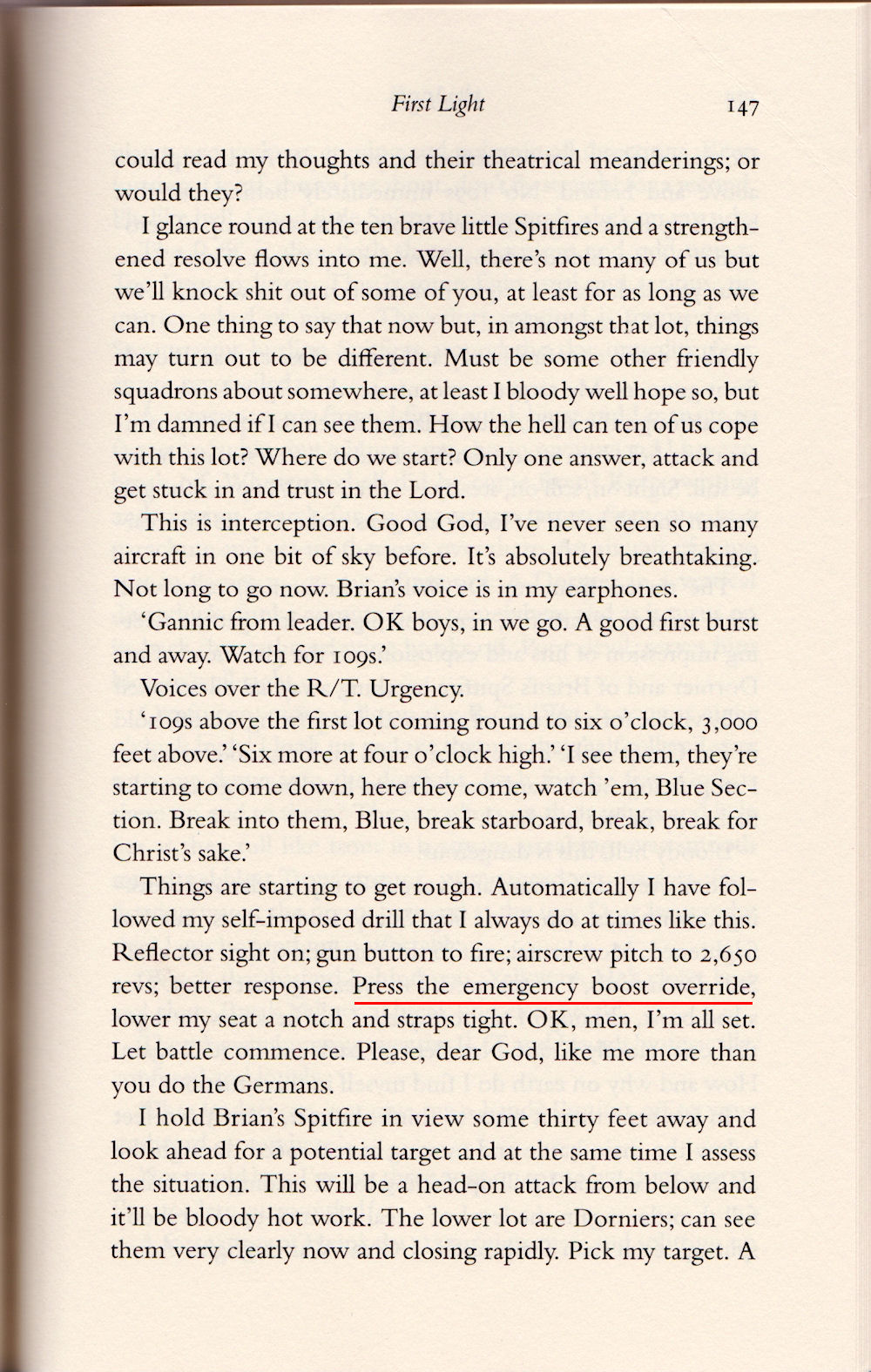 P/O David Crook, 609 Squadron, 30 September 1940 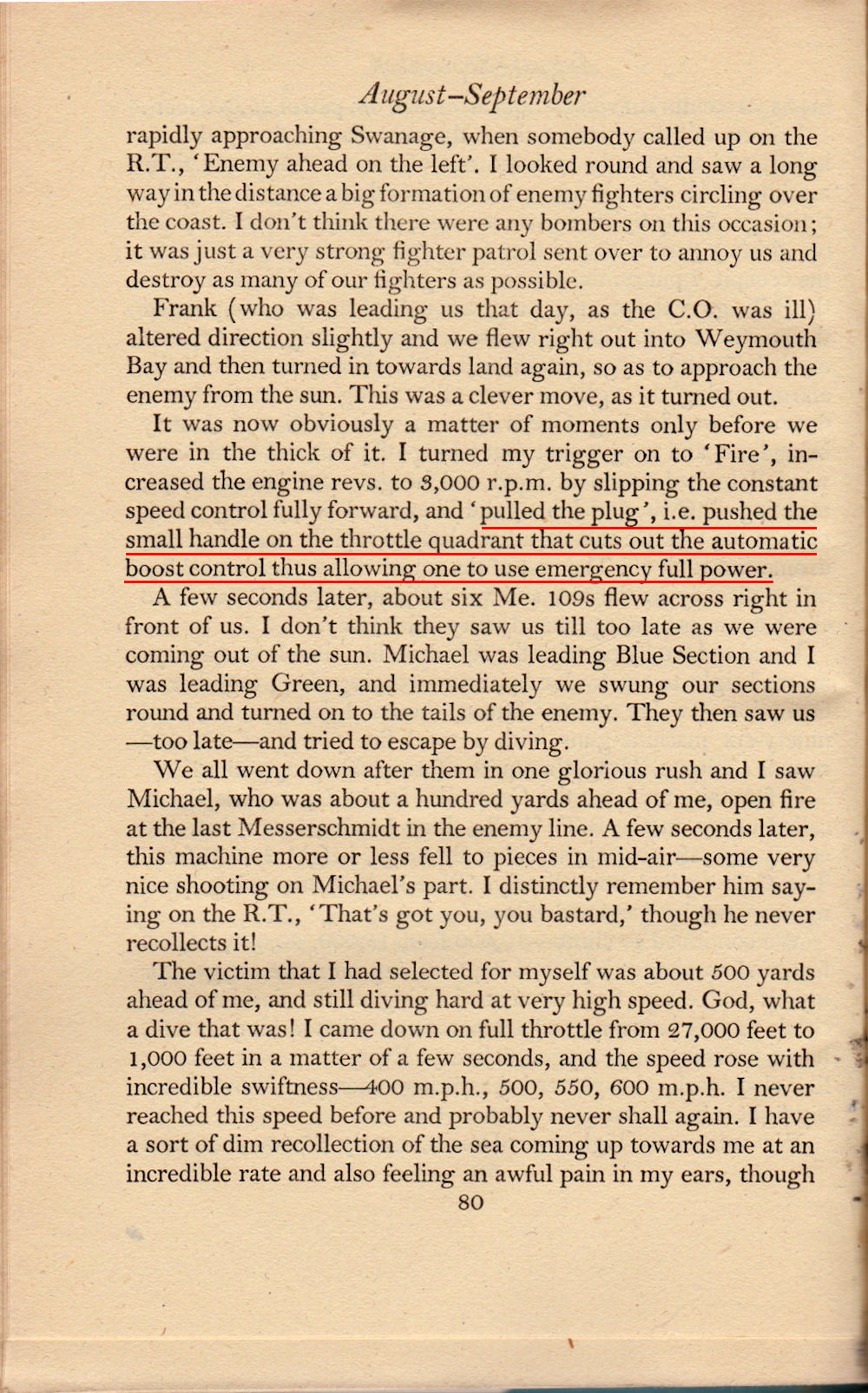 P/O K. W. MacKenzie, 501 Squadron, 5 October 1940 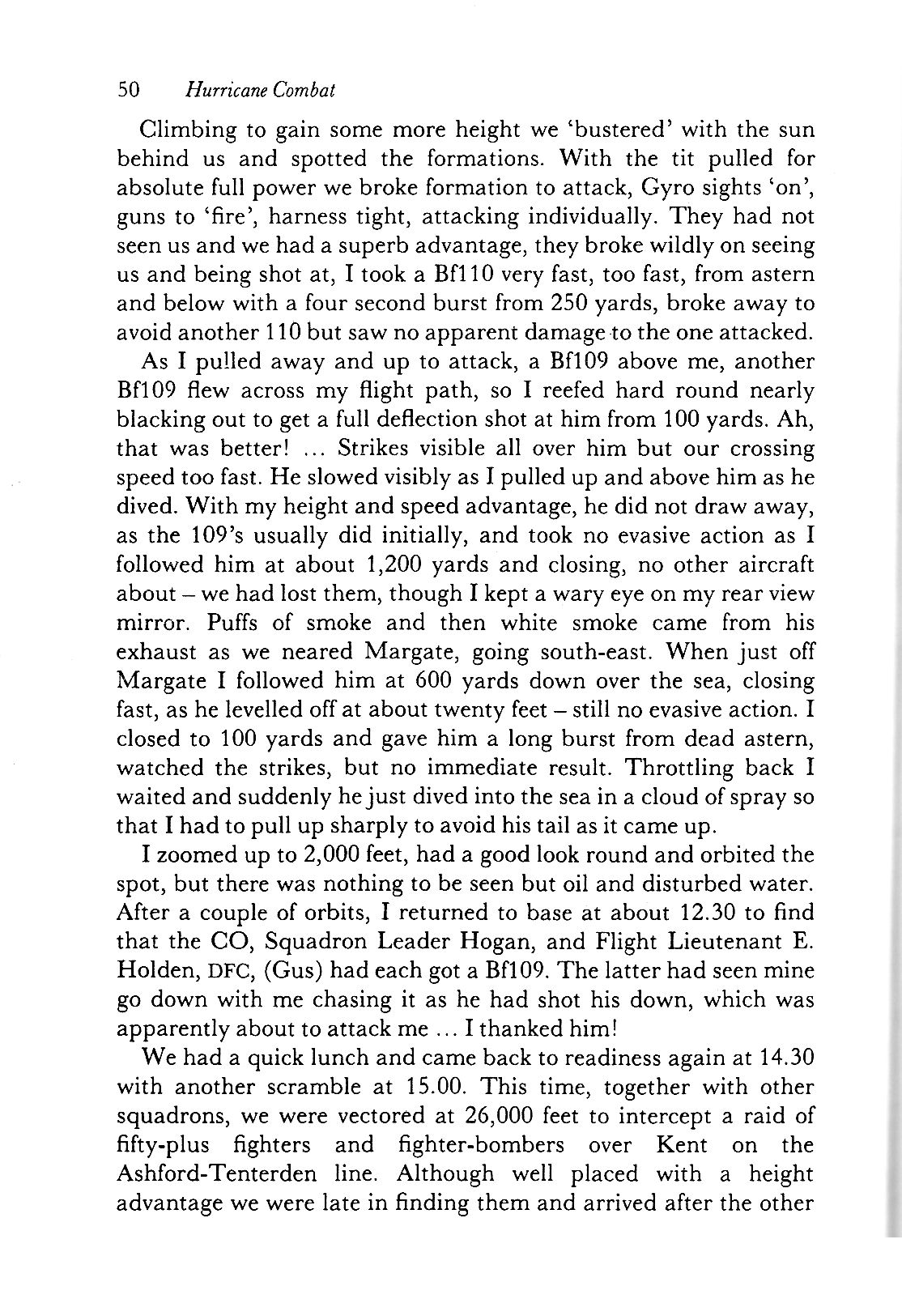 In many cases pilots would note use of 12 lbs boost or emergency power in conjuction with pulling the plug/tit, thereby establishing a direct connection between the various expressions related to emergency power. P/O John Bushell, 151 Squadron, 18 May 1940 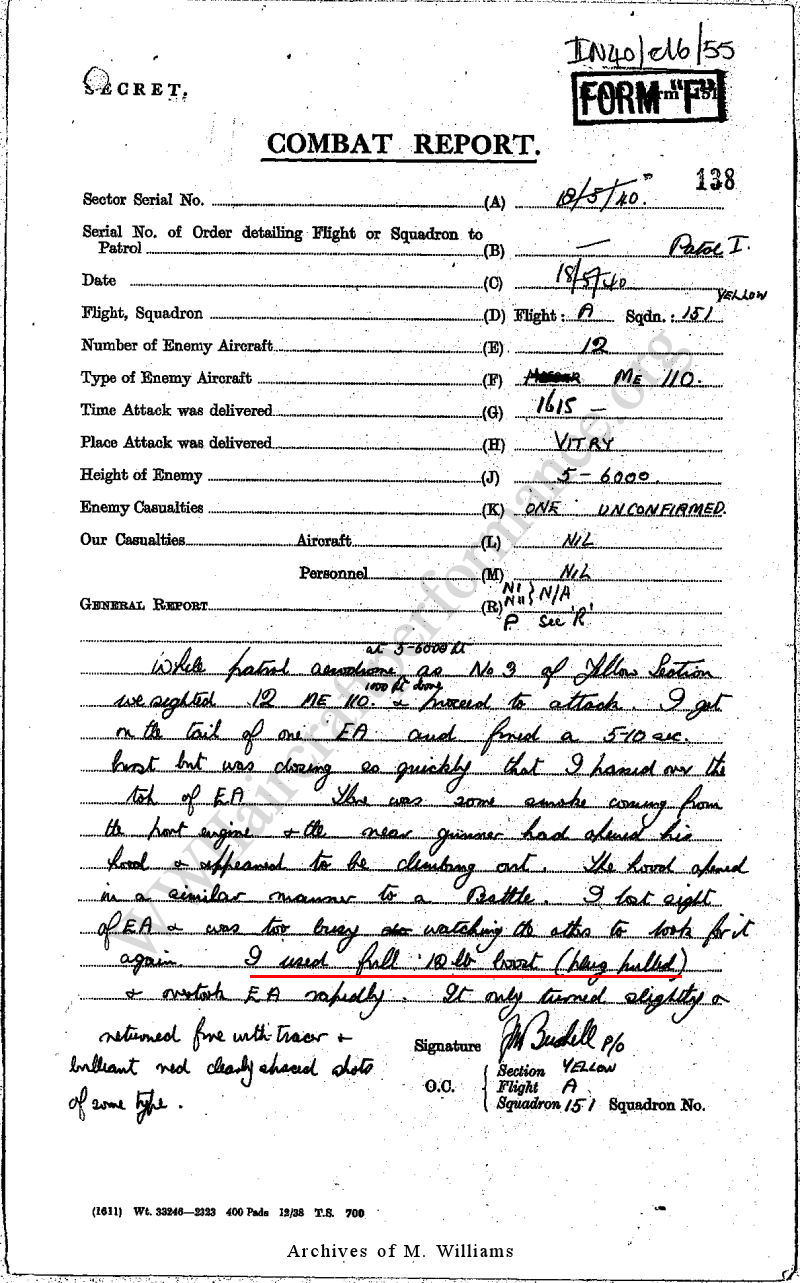 F/Lt. I. R. Gleed, 87 Squadron, 18 May 1940 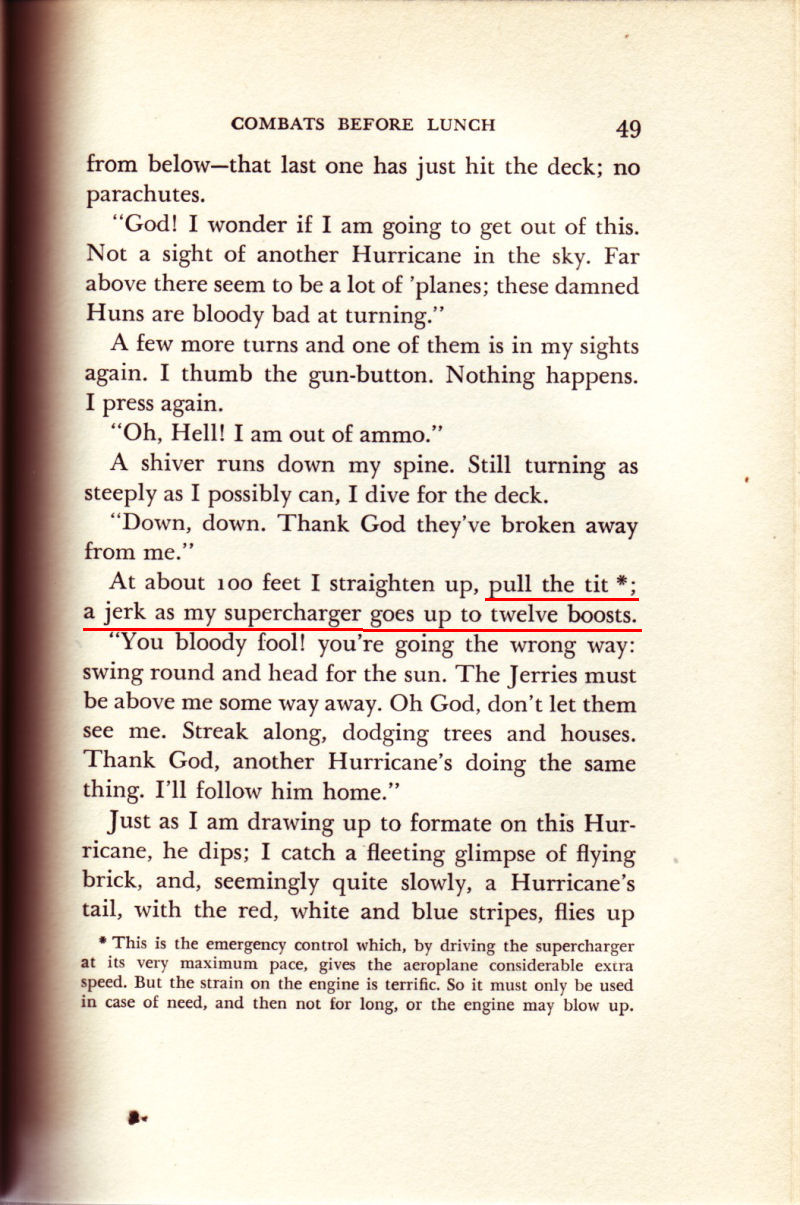 F/Lt. I. R. Gleed, 87 Squadron, 19 May 1940 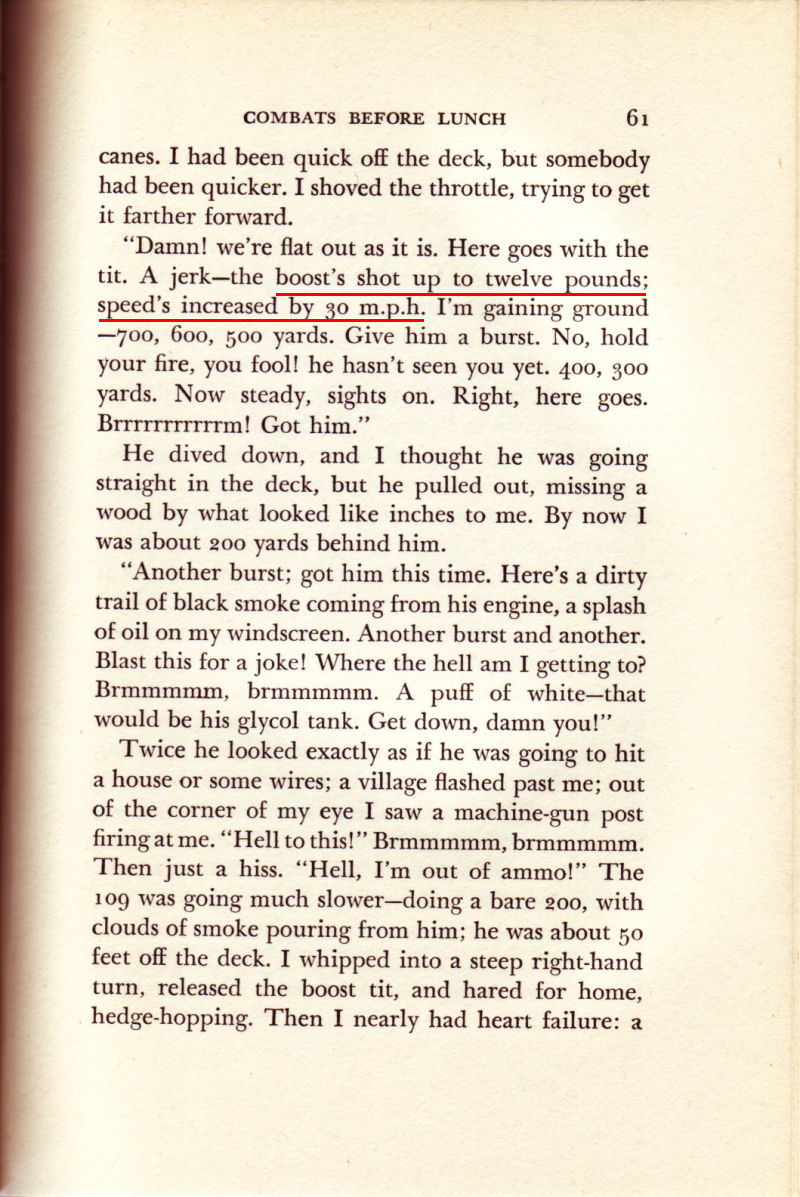 P/O R. P. Beamont, 87 Squadron, 15 May 1940 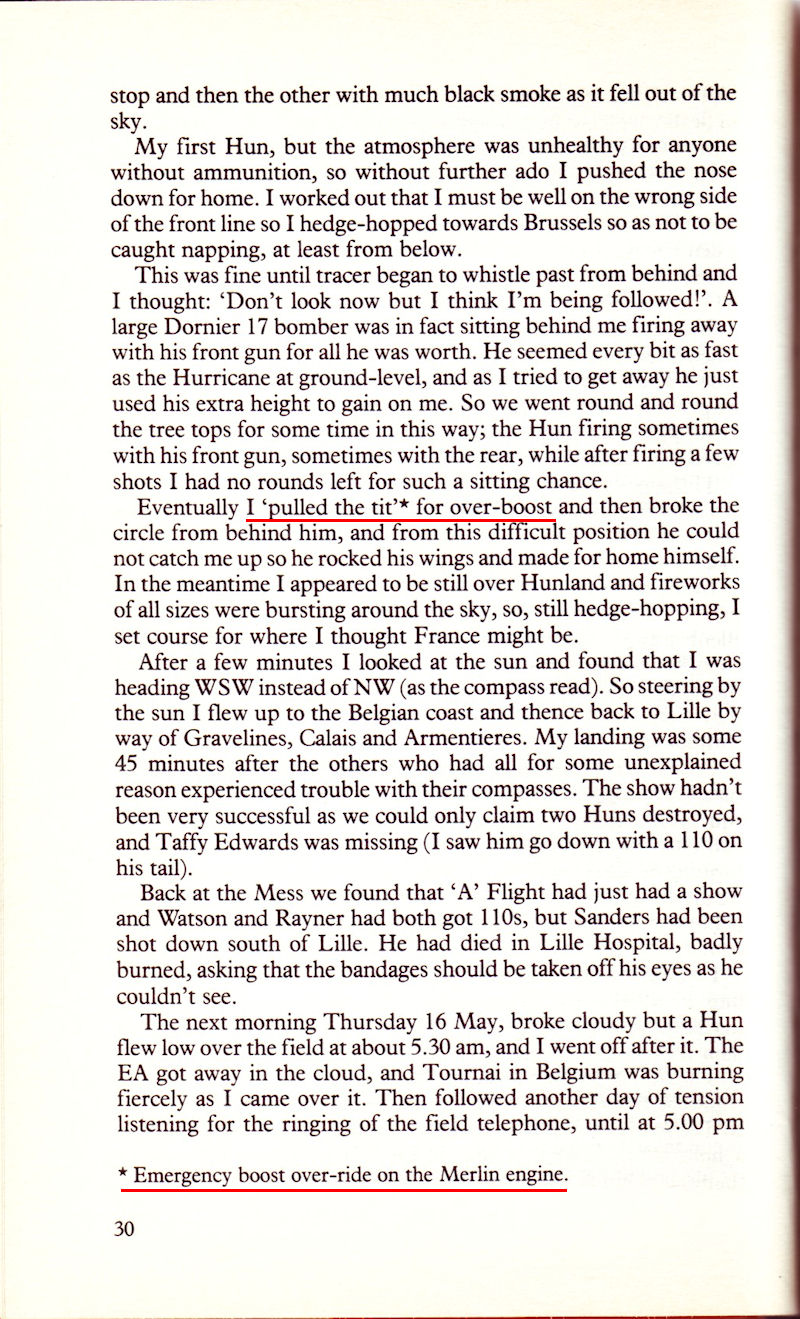 P/O F. B. Sutton, 56 Squadron, 18 May 1940 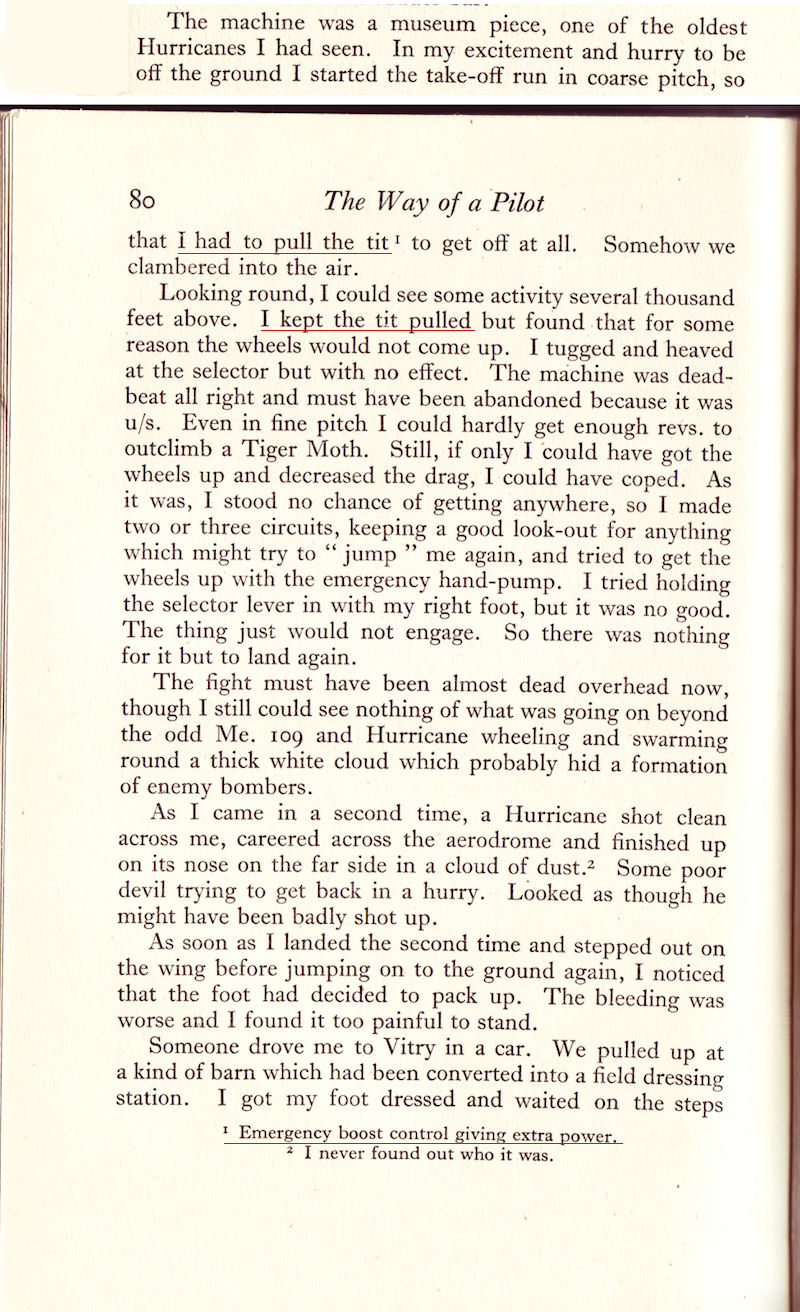 P/O Roger Hall, 152 Squadron, 4 September 1940 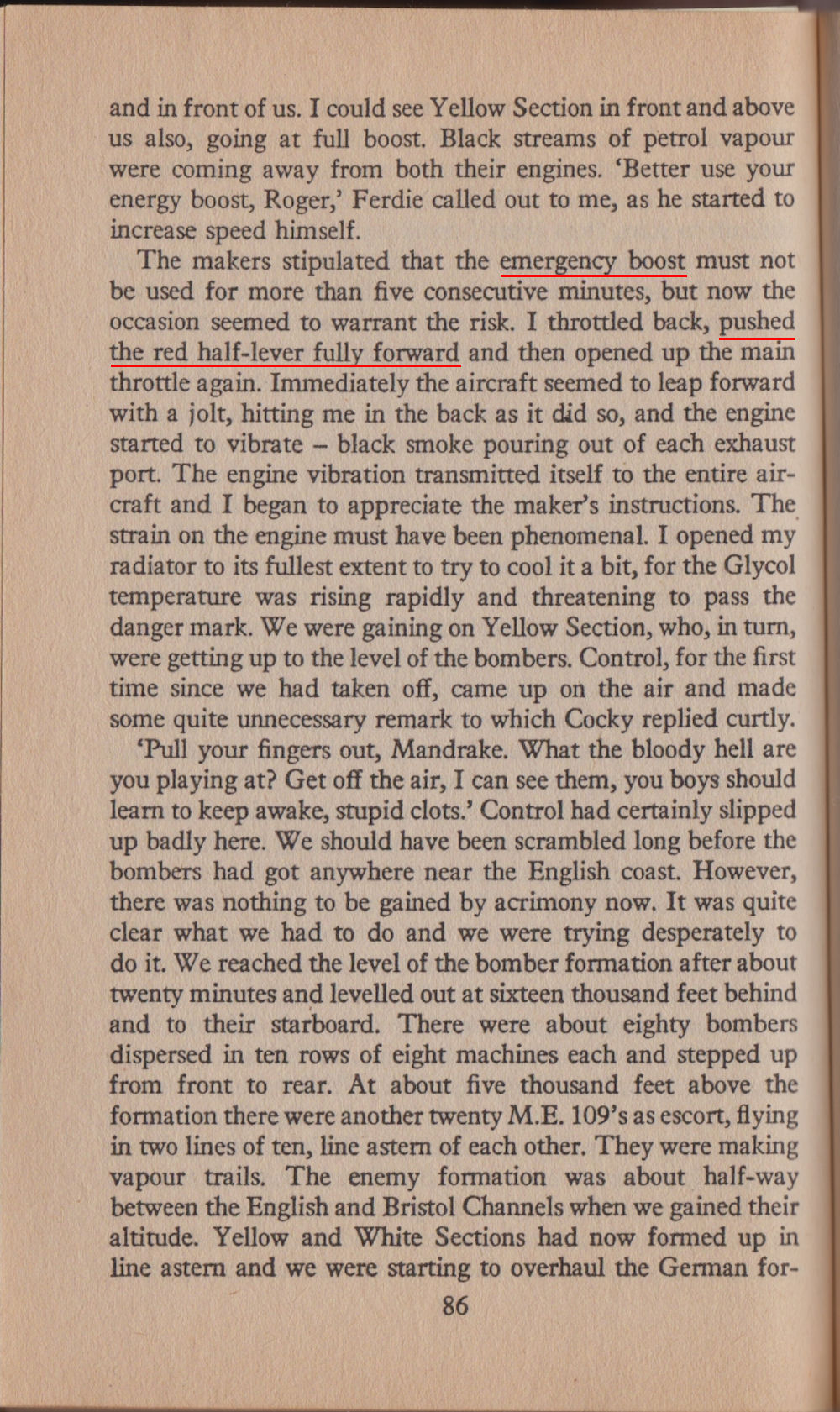 P/O G. Page, 56 Squadron, July 1940 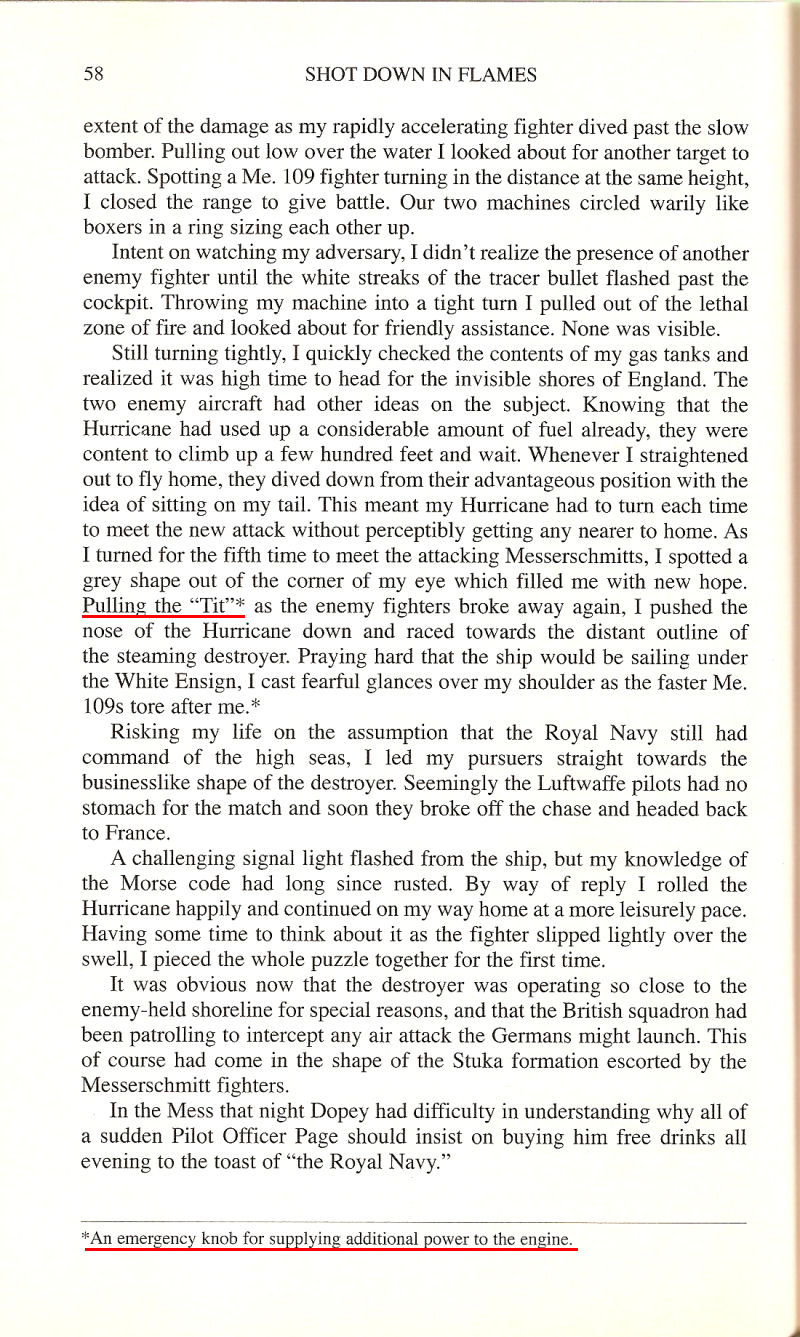 In some cases, in different recounting of the same event, the pilots mentioned +12 lb. boost and boost cut-out/emergency interchangeably: P/O Colin Gray (NZ), No. 54 Squadron, 25 May 1940  P/O Colin Gray (NZ), No. 54 Squadron, 25 May 1940  F/LT Brian Lane, 19 Squadron, 26 May 1940 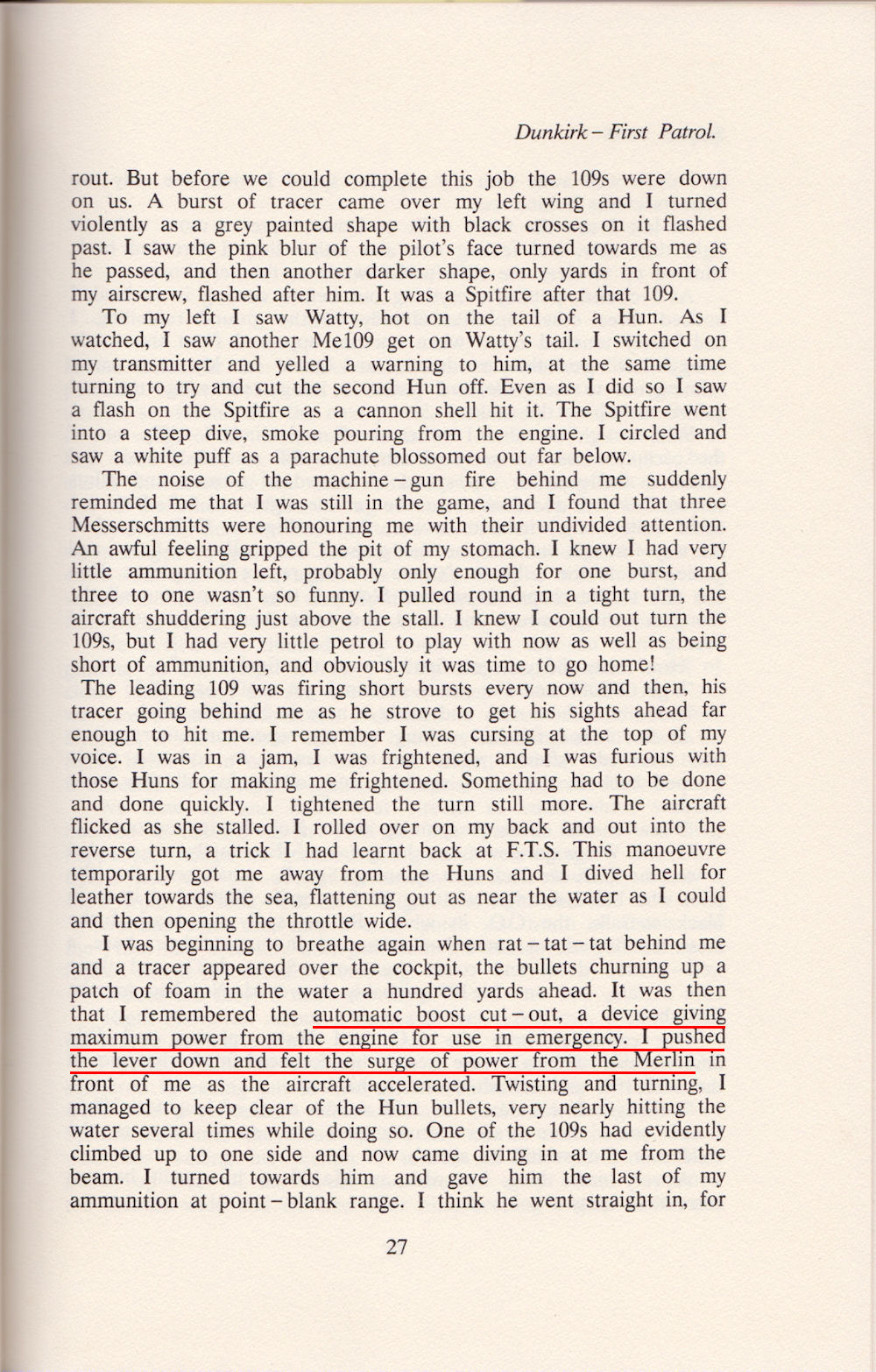 F/LT Brian Lane, 19 Squadron, 26 May 1940 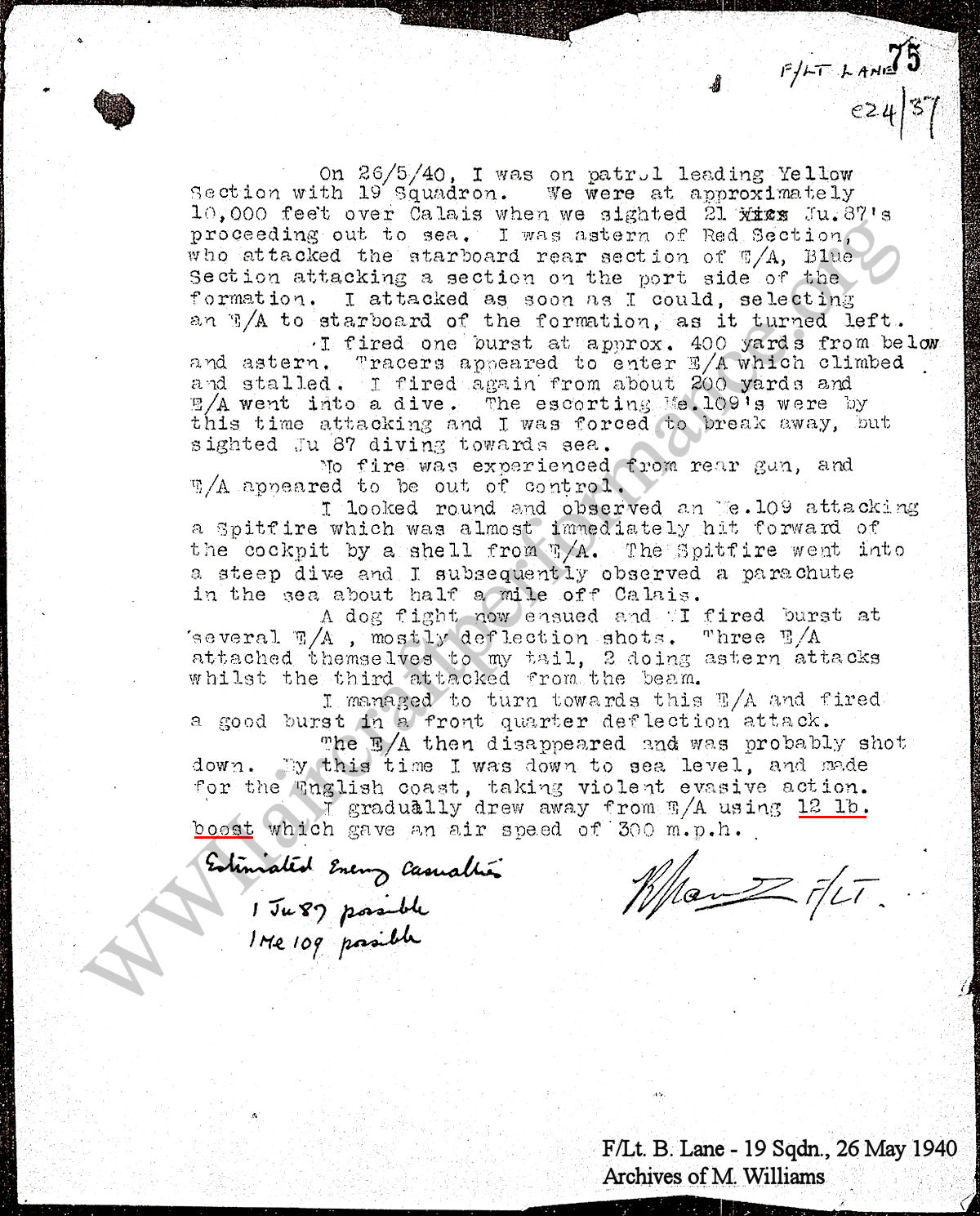
Last edited by lane; 05-16-2012 at 01:03 PM. |
|
#1672
|
|||
|
|||
|
Unless they are one of your 16 squadrons, after all, how can you prove they weren't. As I mentioned before following your logic they probably were.
Last edited by Glider; 05-16-2012 at 12:59 PM. |
|
#1673
|
|||
|
|||
|
Quote:
The maximum permissible boost with 87 octane is documented since 1938 to be +6.25 and since January 1939 it is documented that in excess of this boost 100 octane must be used. The later documents are perfectly in line with the regulations. This leaves the following explanations for the mentioning of use of boost control cut-out: a) there was a failure in boost control and the cut-out is used to maintain a boost below +6.25, this doesn't provide any information about the fuel used as it could happen with 87 octane or 100 octane. b) a boost in excess of +6.25 was used, either for take-off or combat/emergency, this is a proof for the use of 100 octane fuel or the proof for violating the maximum permissible boost. c) a boost below +6.25 was used and the boost control was disabled without any logical reason and this boost was kept manually by the pilot below +6.25. Again no indicator for the fuel used. Reason c) is highly unlikely as this would be a violation of the handling guidelines outlined in RAF Flying Training Manual ("This must only be used in emergency and not, in any circumstances, for ordinary flying, ... even if the correct boost is not exceeded") without any benefit. In most cases reason a) can be ruled out by the context, in case of engine control failure the pilot would try to return to the airfield and avoid any combat and most certainly mention the engine troubles in the report. So in the remaining cases the reported use of the cut-out is: - proof for use of 100 octane fuel - in the other case where 87 octane fuel was used the proof for overstepping of the regular maximum permissible boost. It shows that this was physically possible (or a breakdown of the engine or evidences for detonation would be reported in context) and in addition it was either permitted or tolerated by authority (or it would be reported as a violation in the context, e.g. I'd expect this to be mentioned as one possible reason here http://www.spitfireperformance.com/dowding.pdf). In both cases it is a proof that the performance of the engine was increase. If this is true, this renders the whole 100 octane debate obsolete as pilots would simply use the increased power if necessary independent of the used fuel. My understanding is that this is not true. Last edited by 41Sqn_Banks; 05-16-2012 at 02:14 PM. |
|
#1674
|
|||
|
|||
|
Quote:
wrong It's not irrelevant. What you're claiming here is that every reference to those things, where there is no explicit mention of 12lb, means that we can be 100% certain that they were not referring to 12lb. This is illogical. It's not proof of 12lb boost, but it is entirely relevant and should be investigated to determine if it is, or is not, a reference to 12lb boost, in each case. |
|
#1675
|
|||
|
|||
|
When using emergency boost pressures in excess of 6.25 lbs/sq.in. 100 octane was required, therefore if a pilot recorded use of emergency power it necessarily follows that the aircraft was fueled with 100 octane fuel.
Operational Notes for Pilots on Merlin II and III, January 1939 (thanks 41Sqn_Banks)  Pilot's Notes, Merlin II, III and IV, 4th Edition, April 1940, page 6. 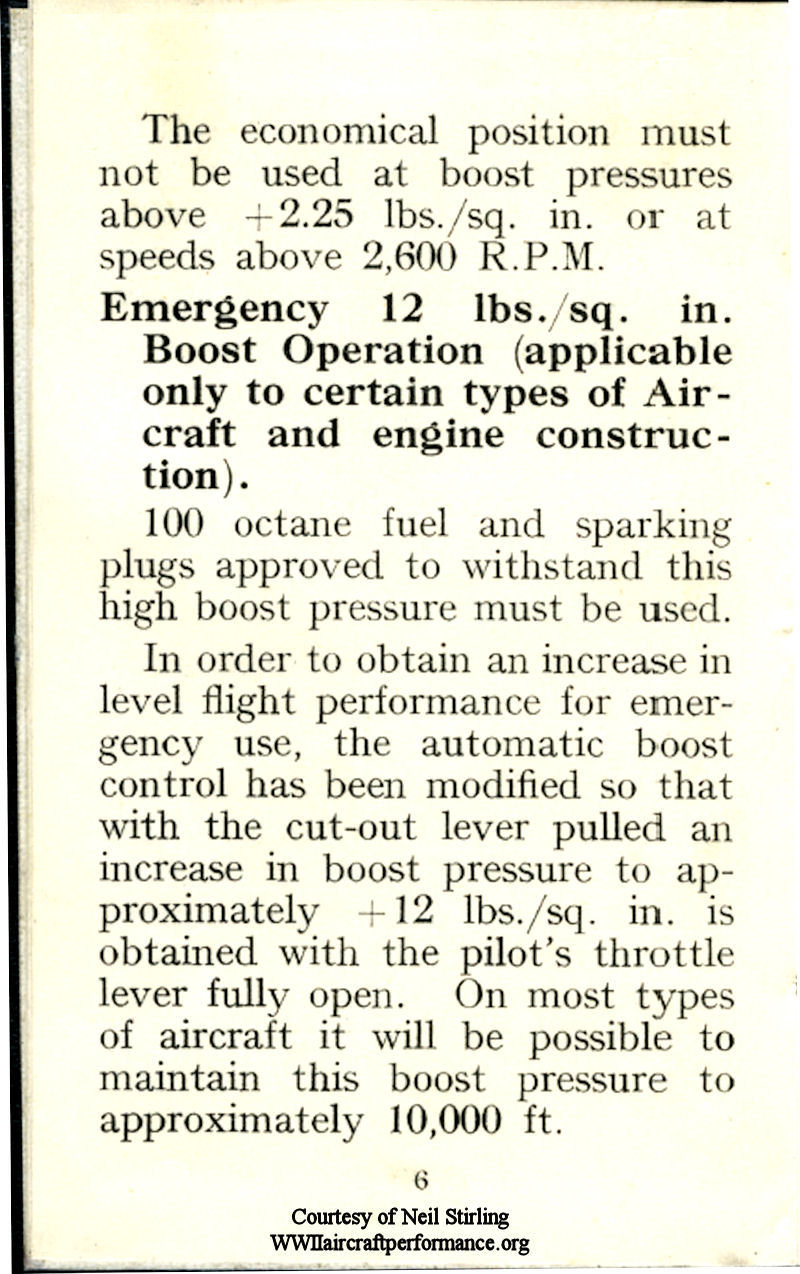 Spitfires were cleared for use of 100 octane fuel for improved take-off in September 1938 just a month after the introduction of the type into service.  By 12 December 1939 100 octane fuel was approved for Spitfires, Hurricanes and Defiants. 100 Octane Fuel - Issue of. |
|
#1676
|
|||
|
|||
|
seems like all you needed was a new set of plugs and a ground test to check smooth running when using the 100 too...
Sounds contradictory to the more doom-and-gloom scenarios presented by some thread participants... |
|
#1677
|
||||
|
||||
|
Quote:
What does it have to do with the fact the system was used before 100 Octane was an issue? Quote:
We also have Operating Note instructions in the General Operating Notes that allow for its use. I bet Dowding did see a large increase in motor failures. |
|
#1678
|
||||
|
||||
|
Quote:
100 Octane has a higher lead content so changing plugs to one that are more resistant to fouling is not a bad idea. The engine will not see any performance gains of the additional knock limited performance without modification as instructed by RAF. Those instructions to gain that performance benefit represent major modifications and inform when those major modifications where done. Those instructions have been posted ad-nauseum in this thread. |
|
#1679
|
||||
|
||||
|
Just out of interest...did anyone realise the use of 'boost cut out' is only authorised for use in combat 'if' 100 octane fuel is used?, this shows that 'any' combat report showing the use of boost in combat confirms the use of 100 octane.
__________________
 Intel Q9550 @3.3ghz(OC), Asus rampage extreme MOBO, Nvidia GTX470 1.2Gb Vram, 8Gb DDR3 Ram, Win 7 64bit ultimate edition Last edited by bongodriver; 05-16-2012 at 03:14 PM. |
|
#1680
|
|||
|
|||
|
The automatic boost control cut out was intended as a emergency measure in case of automatic boost control failure, as 41Sqn_Banks post already indicated. This would be valid independent of fuel used. The procedure would be to cut the throttle, activate the cut out, and reopen throttle until the desired boost is reached. From then on, changes in speed and altitude would cause a change in boost, which could be controlled by change of throttle or engine rpm (supercharger rpm).
The use of as an emergency boost increase was a later practice. However, unless a report makes specific mention of abc failure, there's absolutely no reason to believe it was activated for anything but a 12lbs emergency boost any time 1940 or later. |
 |
|
|